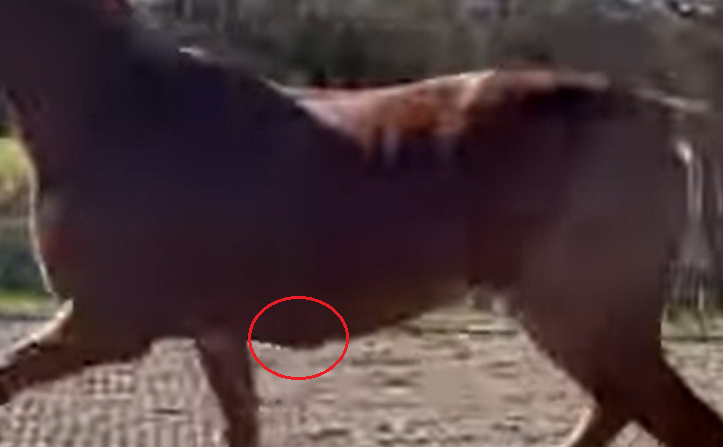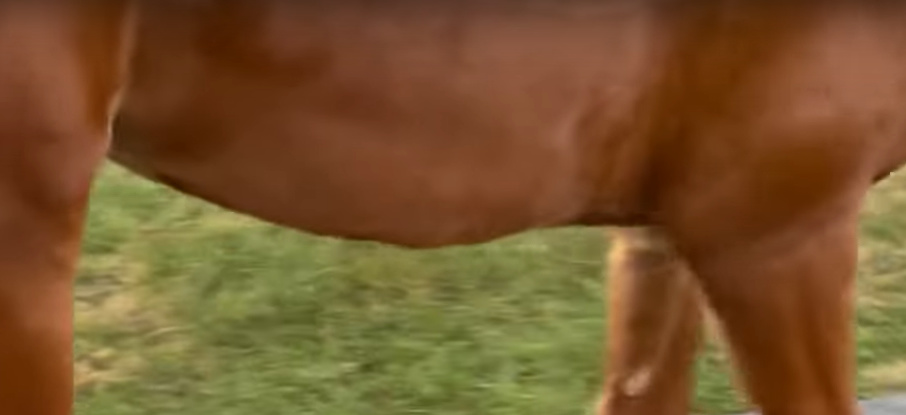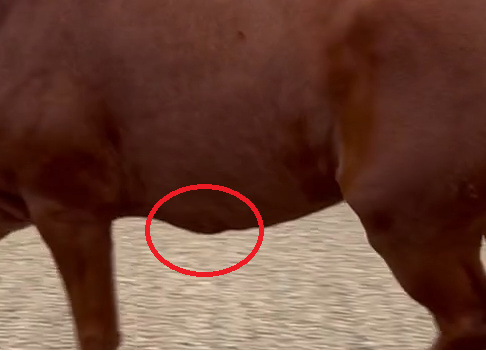Thank you all so much for your support!
I don’t have the written report yet but the vets’ main concerns about him were hind end hypermetria and spasticity–basically picking his hind legs up extra high, having an unusual arc in the cranial phase of the stride (my phrasing–I’m sure there’s a more technical description of that I don’t know), and sometimes showing some tremors right before the foot lands. I see the first two but I have to admit I never saw the third even after it was pointed out to me. I did take a little video but the vet tech is handling him and I don’t feel comfortable posting someone else’s identifying image on the internet without their permission. I will deploy the Pivo to recreate some of the tests at home for you guys and myself though.
Tail pull, downhill walk, and head-raised walk were all normal. He is pretty symmetrical with just slightly more developed muscling on right haunches than left. The movement I described in the cranial phase of the stride is also more pronounced on the right, and does precede his RH injury. Looking back now, I see it in year-old videos from before I bought and imported him, which makes EPM or Lyme unlikely causes.
I was numb yesterday but also kind of accepting because it all made sense…this is just what happens when I buy nice young horses, and I really should have known better. With my last troubled 4-year-old I spent a year and over $12k doing second/third opinions, MRI, shockwave, stall rest, a biopsy, etc only to still have a very lame horse. I finally came to accept what I had suspected within the first month, that he had DSLD, and necropsy confirmed that he did. I don’t know if I can go through all that again to override a strong gut feeling.
This morning, however, I am in Camp Denial. Could this not just be how he’s bred to move?So many dressage-bred horses have exaggerated movement these days, and they can’t all be neuro, right?
Also, the thing that made me go  was longeing on asphalt, when his hind legs were moving very very strangely. I asked if he could be footsore and protecting himself, and was told no because he was negative to hoof testers all over. But I still wonder. He has good enough feet to be barefoot for turnout and arena work, but they are a little sensitive to gravel and hard ground. I use front hoof boots for trail rides and had even brought them to the appt in case footsoreness was confounding the exam. It’s always worse right after a trim, and he was trimmed on Sunday. I will try to recreate that one too, with and without hoof boots.
was longeing on asphalt, when his hind legs were moving very very strangely. I asked if he could be footsore and protecting himself, and was told no because he was negative to hoof testers all over. But I still wonder. He has good enough feet to be barefoot for turnout and arena work, but they are a little sensitive to gravel and hard ground. I use front hoof boots for trail rides and had even brought them to the appt in case footsoreness was confounding the exam. It’s always worse right after a trim, and he was trimmed on Sunday. I will try to recreate that one too, with and without hoof boots.
This morning I think I should not put him through a myelogram without at least a second opinion. If I had my truck I would drive him to New Bolton but I’m not comfortable borrowing a truck for that. The adjuster did finally look at it yesterday (after a week!) so maybe it will be fixed in early January…
I do wonder what happens insurance-wise if we don’t get an exact diagnosis or I choose not to do the myelogram unless his symptoms get worse. Will they exclude every possible neuro issue forever? Will they just drop him? They were awesome when my TB stepped on a nail on a trail ride a couple years ago, but that was a much easier case.
Sigh… I have an important day at work and I haven’t even been outside to feed yet. I’d better go, but thank you all again for the jingles and for reading all this!

 was longeing on asphalt, when his hind legs were moving very very strangely. I asked if he could be footsore and protecting himself, and was told no because he was negative to hoof testers all over. But I still wonder. He has good enough feet to be barefoot for turnout and arena work, but they are a little sensitive to gravel and hard ground. I use front hoof boots for trail rides and had even brought them to the appt in case footsoreness was confounding the exam. It’s always worse right after a trim, and he was trimmed on Sunday. I will try to recreate that one too, with and without hoof boots.
was longeing on asphalt, when his hind legs were moving very very strangely. I asked if he could be footsore and protecting himself, and was told no because he was negative to hoof testers all over. But I still wonder. He has good enough feet to be barefoot for turnout and arena work, but they are a little sensitive to gravel and hard ground. I use front hoof boots for trail rides and had even brought them to the appt in case footsoreness was confounding the exam. It’s always worse right after a trim, and he was trimmed on Sunday. I will try to recreate that one too, with and without hoof boots.


 and well bred. Not saying yours has all or any of those issues just reminded me of him.
and well bred. Not saying yours has all or any of those issues just reminded me of him. I mean, I guess that is an upside of knee arthritis? Limited range of motion = less knee action for a hunter
I mean, I guess that is an upside of knee arthritis? Limited range of motion = less knee action for a hunter 